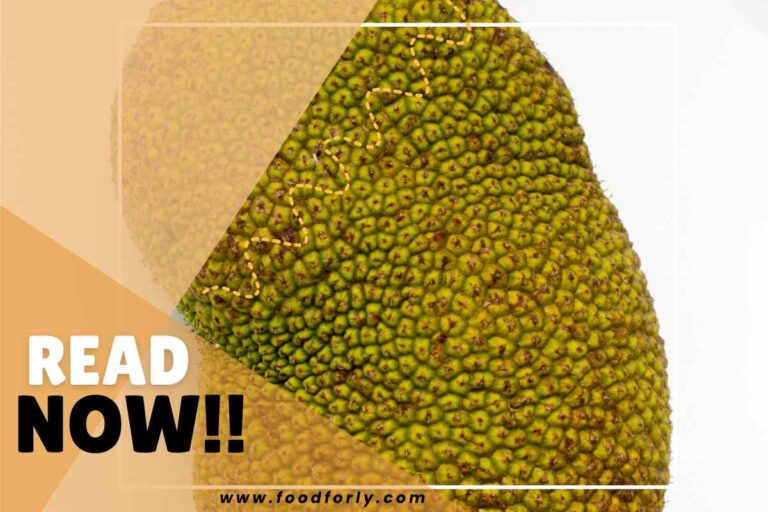Gruyere How To Eat?
Gruyere How To Eat?Gruyère is a versatile and delicious cheese that can be enjoyed in various ways. Here are a few popular ways to eat Gruyère:
- Cheese platter: Gruyère is often included on cheese platters or charcuterie boards. Serve it alongside some cured meats, crackers, fruits, and nuts for a delightful combination of flavors.
- Sandwiches: Gruyère melts beautifully, making it a fantastic choice for grilled cheese sandwiches. It pairs well with ham, turkey, or vegetables. You can also use it in paninis or other hot sandwiches for a rich and creamy flavor.
- Fondue: Gruyère is one of the traditional cheeses used in Swiss fondue. Melt it together with other cheeses like Emmental or Comté, and enjoy dipping bread, vegetables, or other dippable items into the melted cheese.
- Cooking: Gruyère is a fantastic cheese for cooking. It adds a nutty and savory flavor to dishes like quiches, gratins, soups, and sauces. It can also be grated or shredded and used as a topping for gratins, casseroles, or pasta dishes.
- Snacking: Enjoy Gruyère on its own as a snack. Cut it into cubes or slices and savor its rich, slightly sweet, and nutty flavor. It pairs well with fruits like apples or pears, as well as with crusty bread or crackers.
Remember, taste preferences can vary, so feel free to experiment and find your favorite way to enjoy Gruyère.

How Long Can Quiche Be Left Unrefrigerated?
Quiche should not be left unrefrigerated for an extended period of time due to the risk of bacterial growth and foodborne illnesses. Per food safety guidelines, perishable foods like quiche should not be left at room temperature for more than 2 hours.
After cooking a quiche, it’s important to cool it down rapidly and then promptly refrigerate it. If you plan to serve the quiche later, you can reheat it thoroughly before consuming.
It’s always best to err on the side of caution and prioritize food safety by refrigerating perishable items like quiche promptly.
How Long Does Gruyere Cheese Last In The Fridge?
When stored properly in the refrigerator, Gruyère cheese can typically last for about 3 to 4 weeks. It’s important to keep the cheese tightly wrapped or sealed in an airtight container or plastic wrap to prevent it from drying out or absorbing odors from other foods.
Additionally, make sure the refrigerator temperature is set at around 35 to 40 degrees Fahrenheit (1 to 4 degrees Celsius) to maintain the quality of the cheese. If you notice any signs of mold, an off smell, or a change in texture, it’s best to discard the cheese.
How Long Does Parmesan Cheese Last Unrefrigerated?
Parmesan cheese should not be left unrefrigerated for an extended period of time. Due to its low moisture content, Parmesan is less prone to spoilage than other types of cheese, but it can still be affected by heat and humidity.
If you have grated or shredded Parmesan cheese, it should be stored in the refrigerator to maintain its freshness and prevent the growth of bacteria. Unrefrigerated grated Parmesan cheese can become stale, lose its flavor, and potentially spoil if left out for too long.
To ensure the longevity of Parmesan cheese, it is best to store it in the refrigerator in an airtight container or resealable bag. This will help maintain its quality and extend its shelf life.
What Does Gruyere Taste Good With?
Gruyère cheese pairs well with a variety of foods and flavors. Here are some popular combinations:
- Fruits: Gruyère goes well with fruits like apples, pears, and grapes. The sweet and slightly tangy flavors of the fruits complement the nutty and savory notes of the cheese.
- Cured Meats: Pair Gruyère with cured meats like prosciutto, ham, or salami. The saltiness and richness of the meats balance the flavors of the cheese.
- Crusty Bread: Enjoy Gruyère with crusty bread or baguette slices. The combination of the creamy cheese and the crunchy bread creates a delightful contrast in textures.
- White Wine: Gruyère is a classic cheese to pair with white wines such as Chardonnay or Sauvignon Blanc. The acidity and flavors of the wine enhance the taste of the cheese.
- Quiches and Tarts: Use Gruyère as a filling or topping in quiches and savory tarts. Its melting properties and distinct flavor add richness to these dishes.
- Soups and Gratins: Sprinkle Gruyère on top of soups, gratins, or casseroles. It adds a delicious layer of flavor and creates a golden, cheesy crust when melted.
- Fondue: Gruyère is one of the traditional cheeses used in Swiss fondue. Melt it with other cheeses and enjoy dipping bread, vegetables, or other dippable items into the rich and creamy mixture.
These are just a few examples, but feel free to experiment and explore different flavor combinations with Gruyère. Its versatility makes it a delightful addition to a variety of dishes and pairings.
What Is So Special About Gruyère Cheese?
Gruyère cheese is highly regarded and has several unique characteristics that make it special:
- Flavor: Gruyère has a distinctive flavor profile characterized by a nutty and slightly sweet taste. The flavor can vary depending on the aging process, with younger Gruyère being milder and older Gruyère developing a more pronounced and complex flavor.
- AOP designation: Gruyère is protected by the Appellation d’Origine Protégée (AOP) designation, which ensures that it is produced in a specific region and follows strict production methods. The AOP designation guarantees the authenticity and quality of Gruyère cheese.
- Traditional craftsmanship: Gruyère is traditionally made using raw cow’s milk from local farms. The cheese is crafted by skilled cheesemakers who follow time-honored methods, including copper vats and natural aging in caves, which contribute to the cheese’s unique flavor and texture.
- Versatility: Gruyère is a versatile cheese that can be enjoyed in various ways. It melts beautifully, making it ideal for dishes like fondues, quiches, and gratins. It also pairs well with fruits, cured meats, and bread, making it a great addition to cheese platters and sandwiches.
- Rich history: Gruyère cheese has a rich history that dates back to the Middle Ages. It has been produced in the Gruyère region of Switzerland for centuries and is deeply rooted in local traditions and culture.
- Popularity: Gruyère is highly regarded and widely recognized as one of the world’s finest cheeses. Its exceptional flavor and quality have gained it popularity both in Switzerland and internationally, making it a sought-after cheese for cheese enthusiasts.
These aspects contribute to the special reputation of Gruyère cheese and make it a beloved choice among cheese lovers around the world.
Is Gruyere A Cooked Cheese?
Yes, Gruyère is considered a cooked cheese. During the cheesemaking process, the milk used to produce Gruyère is heated and then coagulated using rennet. The curds are then cut, cooked, and stirred to release whey and develop the desired texture. After cooking, the curds are pressed and aged, allowing the flavors to develop and the cheese to mature.
The cooking step in the cheesemaking process helps to create the unique characteristics of Gruyère, including its distinctive flavor, texture, and melting properties.
Is Gruyere A Healthy Cheese?
Gruyère cheese, like other types of cheese, provides various nutrients and can be part of a balanced diet. However, it is important to consume cheese in moderation due to its high calorie and fat content. Here are some key points regarding the nutritional aspects of Gruyère cheese:
- Protein: Gruyère cheese is a good source of protein, which is important for muscle growth and repair, as well as other bodily functions.
- Calcium: Cheese, including Gruyère, is rich in calcium, which is essential for maintaining strong bones and teeth.
- Fat: Gruyère is a relatively high-fat cheese, so it’s important to consume it in moderation, especially if you’re watching your fat intake or have specific dietary restrictions.
- Vitamins and Minerals: Gruyère contains various vitamins and minerals, including vitamin A, vitamin B12, phosphorus, and zinc, albeit in relatively small amounts.
- Sodium: Like many cheeses, Gruyère can be relatively high in sodium, which may be a concern for individuals on a low-sodium diet or with certain health conditions.
It’s important to consider portion sizes and overall dietary balance when including Gruyère or any cheese in your diet. Incorporating a variety of nutrient-dense foods, including fruits, vegetables, whole grains, and lean proteins, is crucial for a healthy eating plan. If you have specific dietary concerns or health conditions, it’s always best to consult with a healthcare professional or registered dietitian for personalized advice.
Does Gruyere Taste Like Mozzarella?
No, Gruyère does not taste like mozzarella. Gruyère cheese has a distinct flavor profile characterized by a nutty and slightly sweet taste. It has a rich and complex flavor that can vary depending on the aging process. Gruyère is known for its creamy and smooth texture with occasional small crunchy crystals.
On the other hand, mozzarella cheese has a mild and delicate flavor. It has a fresh and milky taste with a soft and stretchy texture when melted. Mozzarella is often used in dishes like pizza and Caprese salad.
While both Gruyère and mozzarella are delicious cheeses, they have different flavors, textures, and uses in cooking.




